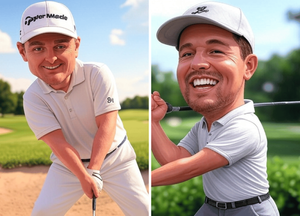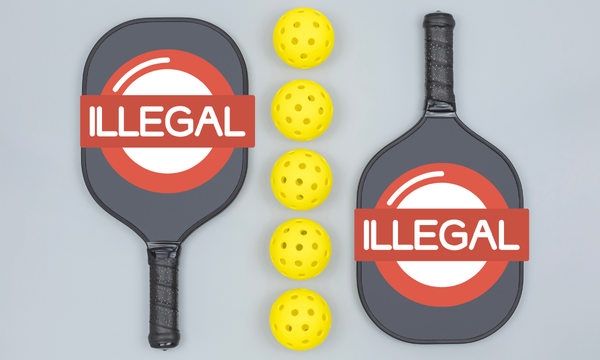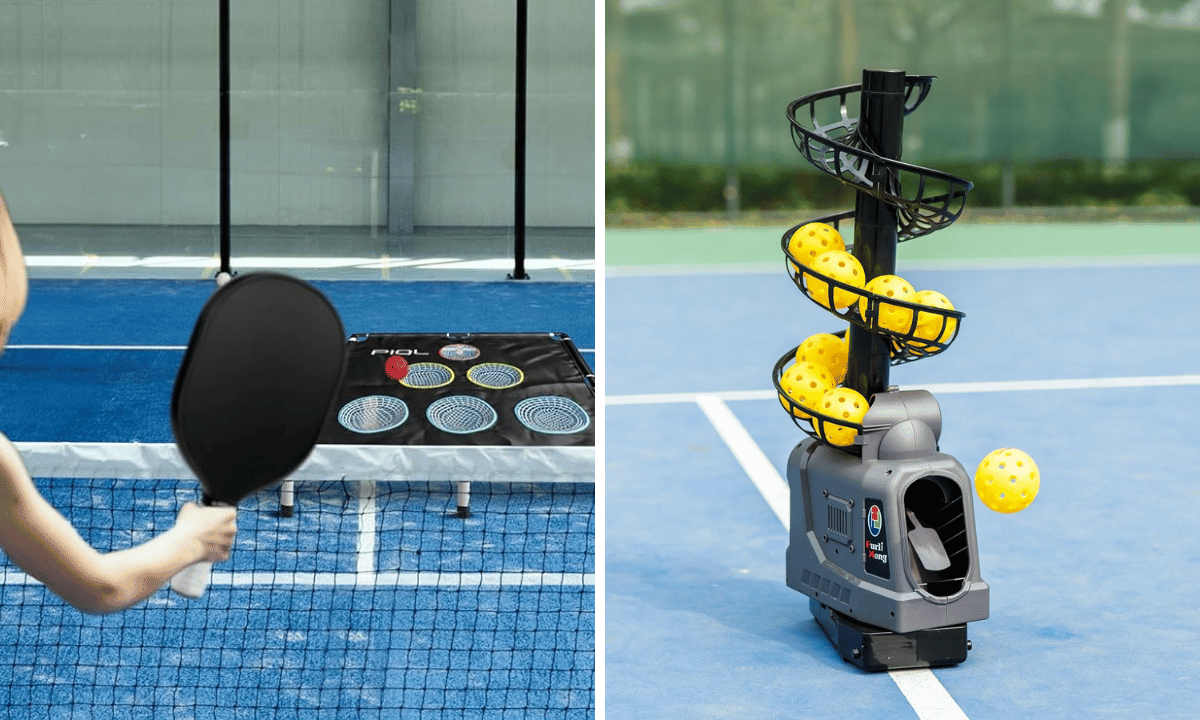Pickleball, a sport that has taken the world by storm in recent years, has a fascinating history that dates back to the mid-1960s. Combining elements of badminton, table tennis, and tennis, this fun and engaging game has grown in popularity across the globe.
But have you ever wondered “Who invented pickleball and why was it called pickleball?” In this blog post, we will delve into the history of pickleball, explore its evolution, and learn about the unique terminology that has developed along with the sport.
Key Takeaways
- Pickleball was invented in 1965 by combining elements of badminton, table tennis, and tennis.
- It is uncertain where the name “pickleball” originated but there are various theories that attempt to explain it.
- Pickleball’s popularity has rapidly grown due to its ease of learning, versatility, and affordability. Boosted By COVID-19 safety protocols leading to international recognition for pickleball with unique terminology reflecting its playful nature.
The Birth of Pickleball: Inventors and Origins

Pickleball was formed in 1965 when Joel Pritchard, Bill Bell, and Barney McCallum invented a new game for their families’ enjoyment at Pritchard’s Bainbridge Island home in Washington.
Combining their love for badminton, table tennis, and tennis, these innovative minds transformed an old badminton court into the birthplace of pickleball. Their innovative thinking and perseverance laid the bedrock for a sport that would rapidly gain popularity in the United States and globally.
As the inventors experimented with various racquets and balls, they eventually settled on using table tennis paddles and a perforated plastic ball, which proved to be the perfect combination for their new game.
To make it more accessible, they lowered the badminton net from its standard height to 36 inches at the edges and 34 inches at the center. This alteration made it easier for the ball to sail over the net, enhancing the game’s appeal to players of all ages and abilities.
The Initial Idea
The genesis of pickleball arose from the inventors’ aspiration to design a game playable by their families on a modified badminton court in Pritchard’s backyard. By utilizing table tennis paddles and a punctured plastic ball, they invented pickleball, a game that allowed shots to bounce, making it easier for players to return the ball and engage in exciting rallies.
This amalgamation of various racquet sports elements established the foundation for America’s newest racquet sport, called pickleball, the contemporary game we cherish today.

Developing the Game
As pickleball started to evolve, Pritchard, Bell, and McCallum dedicated themselves to fine-tuning its rules and apparatus. Drawing heavily upon the conventions of badminton, they set out to create a set of rules that would make the game both enjoyable and challenging.
They experimented with different paddle materials and ball designs, ultimately paving the way for the development of composite pickleball paddles and the standardized pickleball that we use today.
The inventors’ commitment to refining the game proved fruitful as their invention gained popularity and extended beyond Bainbridge Island. It wasn’t long before the first permanent pickleball court was established at the South Center Athletic Club in Tukwila, Washington, in 1980.
This marked a significant milestone in the history of pickleball, as it signaled the beginning of competitive play and the establishment of a thriving pickleball community, including the introduction of the official pickleball court.
The Naming Saga: How Did Pickleball Get Its Name?
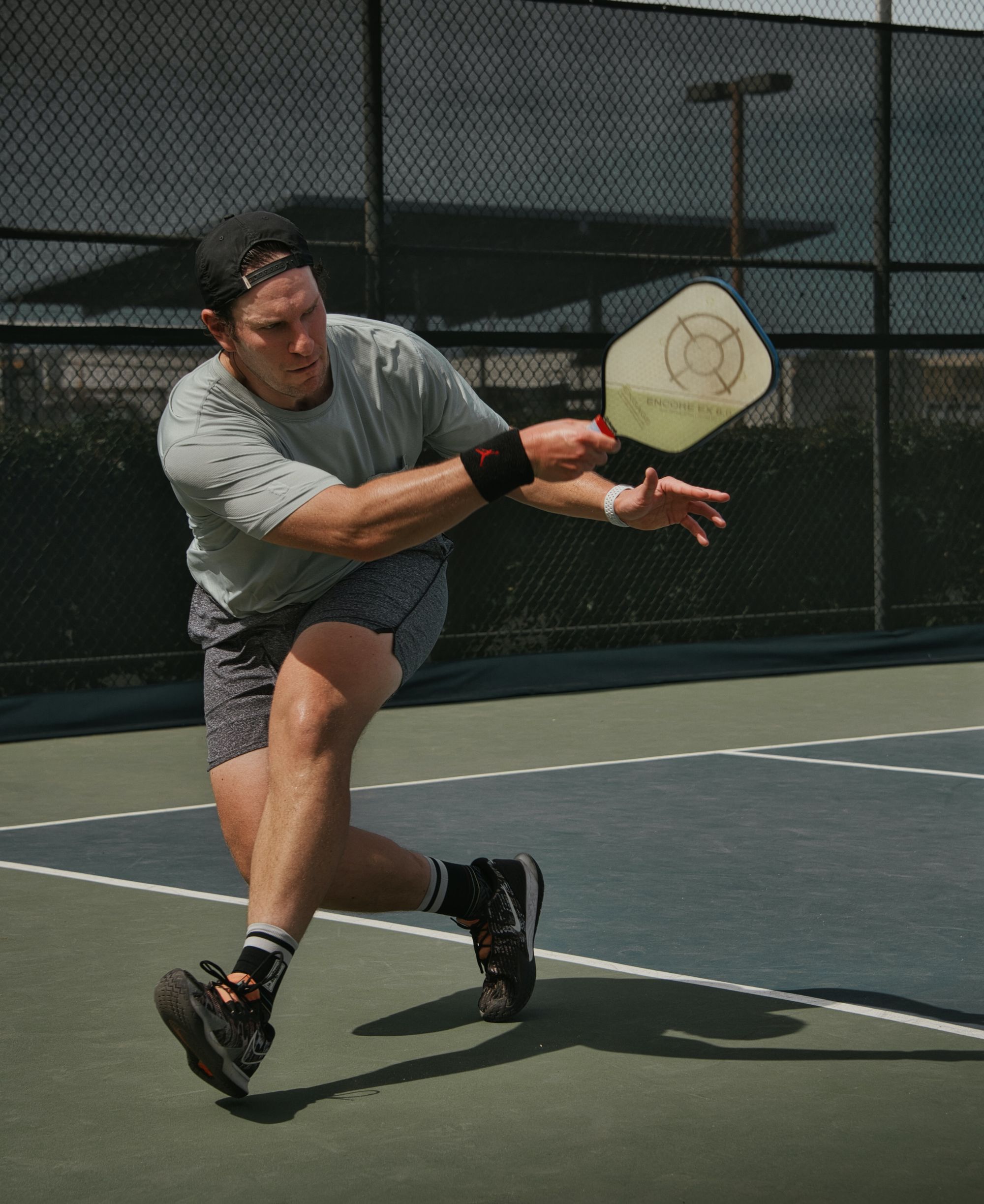
The etymology of the term “pickleball” has piqued the curiosity of both players and enthusiasts. While the inventors of the game have never definitively explained the reason behind the name, there are three popular theories that have emerged over the years.
Each theory presents a distinct and amusing narrative about the name of this adored sport.
The Pickle Boat Theory
The Pickle Boat Theory suggests that the name “pickleball” may have originated from a term used in rowing. In college rowing, a “pickle boat” refers to a crew composed of leftover rowers who did not make it onto any of the other boats. The inventors of pickleball, Pritchard and Bell, both had experience with rowing, which lends some credibility to this theory.
The idea is that the game of pickleball, being a combination of elements from different racquet sports, could be seen as a “pickle boat” of its own – a blend of the “leftover” aspects of badminton, table tennis, and tennis.
The Dog Named Pickles Theory
The Dog Named Pickles. The theory is an amusing tale that suggests the game was named after a canine companion. According to this theory, the Pritchard family had a dog named Pickles, who would often chase after the ball during games.
While this story has become a popular explanation for the name “pickleball,” it has been debunked by the inventors themselves. Pickles the dog did not appear in the scene for several years. Interestingly, this pup was actually named after the sport, rather than the other way around.
The In-a-Pickle Story
The In-a-Pickle Story is a humorous theory that attributes the game’s name to one of its inventors, Bill Bell. It is said that during games, Bell would often hit precise shots that were challenging for his opponents to return, leaving them “in a pickle.” This phrase, which means to be in a difficult or perplexing situation, is thought to have inspired the name “pickleball.”
While this theory may not be the definitive answer to the origin of the name, it certainly adds a playful twist to the history of the sport.
The Evolution of Pickleball Equipment
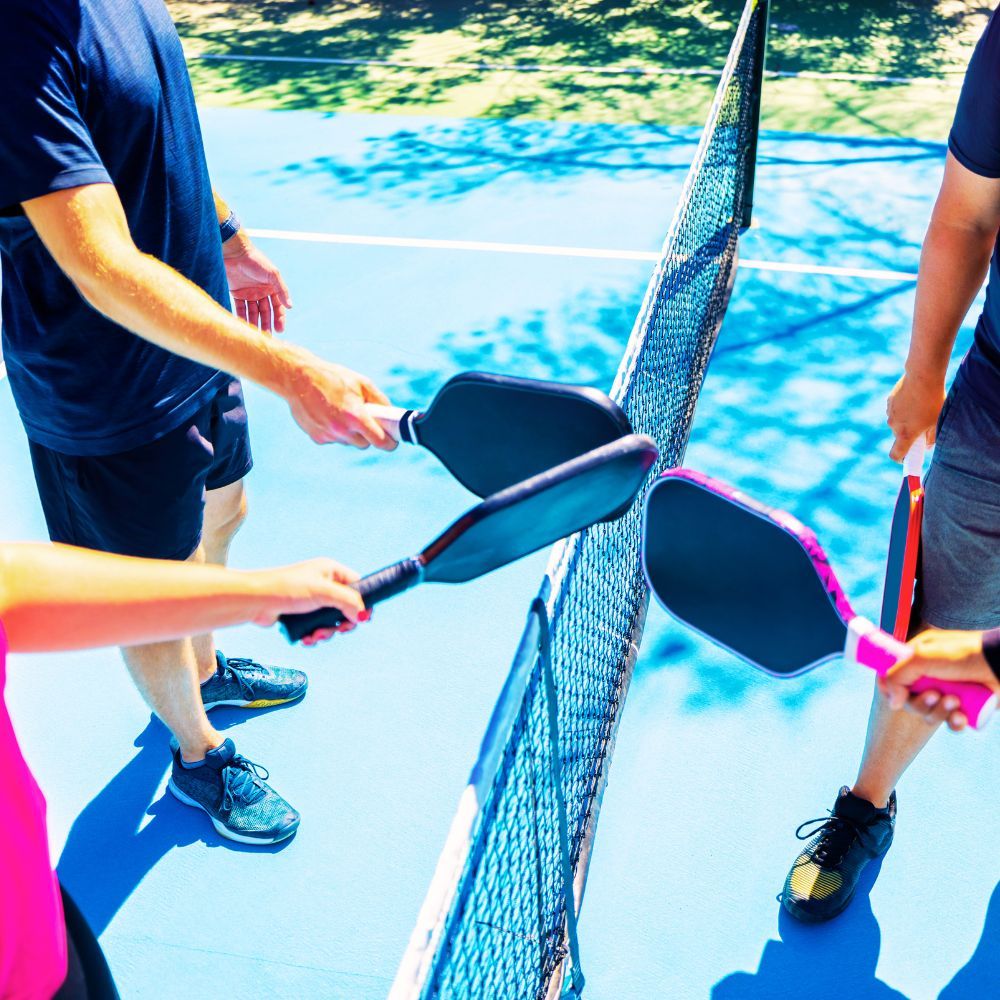
The evolution of pickleball as a sport has driven advancements in the equipment used by its players. From the early days of using table tennis paddles and perforated plastic balls, pickleball equipment has evolved to meet the needs of a growing and diverse community of players.
Innovative changes in paddle materials and ball designs have enhanced performance and endurance, keeping the game engaging and attainable for players across all skill levels.
Composite Pickleball Paddles
In the 1980s, a significant advancement in pickleball equipment was the introduction of composite pickleball paddles. These paddles, made from a combination of materials such as carbon fiber and fiberglass, offered a balance between power and control that made them user-friendly and reliable with each stroke.
The inventor of the first composite pickleball paddle, Arlen Paranto, revolutionized the sport by providing players with a more durable and high-performing alternative to wooden paddles.
Composite pickleball paddles have since become the standard in competitive play, offering numerous benefits over their wooden counterparts. These paddles not only provide enhanced performance but also offer greater longevity, ensuring that players can continue to enjoy the game without the need for frequent paddle replacements.
As the sport of pickleball continues to grow, it is likely that further innovations in equipment will follow, allowing the game to evolve and adapt to the needs of its ever-expanding community.
Official Pickleball Kits
Official pickleball kits have played an important role in the standardization and accessibility of the sport. These kits typically include everything needed to play the game, such as:
- Pickleball paddles
- Balls
- A net system
- A carrying bag
By offering a uniform set of equipment, official pickleball kits make it easy for players of all skill levels to enjoy the game without the need to source individual components.
A variety of official pickleball kits are available on the market, catering to different skill levels and preferences. Beginner kits often include basic paddles and balls, while intermediate and advanced kits may feature higher-quality paddles and additional accessories.
By providing a comprehensive and standardized set of equipment, official pickleball kits have helped to promote the sport and ensure that players have access to the tools they need to enjoy the game to its fullest.
The Rise of Pickleball Tournaments and Associations

The increasing appeal of pickleball has prompted the creation of a multitude of tournaments and associations committed to advancing and coordinating the sport. These organizations play a crucial role in the continued growth of pickleball, offering players opportunities to compete, learn, and connect with others who share their passion for the game.
With the sport garnering recognition both within the nation and globally, the impact of pickleball tournaments and associations will surely proliferate, reinforcing the sport’s position in the realm of competitive sports.
First Known Pickleball Tournament
The inaugural pickleball tournament was held in 1976, representing a noteworthy landmark in the sport’s history. This event signaled the beginning of competitive play, as players from various skill levels gathered to showcase their talents and vie for the title of champion. The tournament featured large wooden paddles and a whiffle ball of softball size, the standard equipment used in the early days of the sport.
The success of the first pickleball tournament laid the groundwork for future competitions and the establishment of dedicated pickleball associations. As the sport continued to grow in popularity, more tournaments were organized, attracting players from across the country and eventually from around the world. Today, pickleball tournaments are held at various levels of competition, including:
- Local events
- Regional tournaments
- National championships
- International competitions
These tournaments showcase the sport’s ever-growing reach and appeal.
USA Pickleball Association
The USA Pickleball Association (USAPA), a non-profit entity, is committed to promoting pickleball, orchestrating tournaments, and establishing standardized rules. Established by pickleball enthusiast Sid Williams, the USAPA has played a pivotal role in the growth and recognition of the sport in the United States and beyond, including the development of the Professional Pickleball Association.
Over the years, the USAPA has organized numerous high-profile tournaments, such as the US Open Pickleball Championships and the first USAPA National Tournament. In addition to organizing events like the USAPA National Tournament, the association has developed rules and regulations for the game, paddles, balls, nets, and tournaments, ensuring that the sport remains accessible and enjoyable for players of all skill levels.
The USAPA’s efforts have been instrumental in promoting the sport of pickleball and fostering a dedicated and passionate community of players.
Pickleball Today: Popularity and Growth

Pickleball has seen a swift surge in popularity in recent years, within the United States and on an international scale. With a short learning curve, appeal to a wide range of ages and fitness levels, and low initial costs, the sport has quickly become a favorite among recreational and competitive players alike, as more people discover how to play pickleball.
As pickleball continues to expand its reach and attract new players, the sport shows no signs of slowing down in its meteoric rise to prominence.
COVID-19 Pandemic Impact
The COVID-19 pandemic profoundly influenced the popularity of pickleball. As people searched for safe, outdoor activities that allowed for social distancing, pickleball emerged as an ideal option. Many pickleball courts implemented safety protocols, such as limiting the number of players on the court, requiring masks, and providing hand sanitizer.
The pandemic’s unique circumstances contributed to a surge in pickleball participation, further solidifying the sport’s status as a popular and accessible form of exercise and recreation.
International Recognition
In recent years, the global recognition of pickleball has seen a substantial increase, partly due to the endeavors of organizations such as the International Federation of Pickleball (IFP) and the World Pickleball Federation (WPF).
These organizations have worked tirelessly to promote the sport on a global scale, establishing pickleball associations in numerous countries and organizing international competitions.
This international growth has been further bolstered by the sport’s continued popularity in the United States. In 2021 and 2022, the Sports and Fitness Industry Association (SFIA) reported that pickleball had become the fastest-growing sport in the United States for two consecutive years, with the number of players increasing by nearly 40% to 4.8 million.
As pickleball continues to gain worldwide recognition, the sport’s future looks bright, with an ever-growing community of passionate players and supporters.
Unique Terminology in Pickleball

Similar to other sports, pickleball boasts a unique lexicon that differentiates it from other racquet sports. From the amusing origin of the name “pickleball” itself to the specific phrases used during gameplay, the sport’s language reflects its playful and engaging nature.
One example of pickleball’s unique terminology is the use of the word “pickle” by players to signal their readiness to serve. When a player says “pickle,” they are indicating their serving position and alerting their opponents to prepare for the incoming serve.
Other terms, such as “picklers” (devoted pickleball players) and “pickledome” (a championship-level pickleball court), further add to the sport’s distinct vocabulary and contribute to its unmistakable identity.
SwagScale Summary
In conclusion, the history of pickleball is a fascinating journey that showcases the creativity, passion, and determination of its inventors and the ever-growing community of players and enthusiasts.
From its humble beginnings on a modified badminton court to its current status as the fastest-growing sport in the United States, pickleball has captured the hearts of millions around the globe.
As the sport continues to evolve and expand, one thing remains certain: the playful spirit and engaging gameplay that defines pickleball will undoubtedly continue to attract new players and inspire countless moments of joy and camaraderie on courts worldwide.
Your Pickleball Guru,
Kim

Frequently Asked Questions
Where did pickleball get its name from?
Pickleball got its name from the “pickle boat” of crew races, referring to the non-starters that were thrown together. The name was coined by Joan Pritchard in 1965 when pickleball was first invented on Bainbridge Island, Washington.
What are the two reasons they gave for the name pickleball?
Pickleball was coined by Joel Pritchard’s wife, Joan, due to its combination of different sports being similar to the pickle boat in crew.
However, it is also said to have been named after Pritchard’s dog.
What does pickle mean in pickleball?
Pickle in pickleball refers to a scenario in which one team has scored no points while the other has, hence they have been “picked”. Picklers are dedicated players of the game who embrace it with passion.
What is the origin of pickleball and why was it invented?
Pickleball was invented in 1965 by three dads, Joel Pritchard, Bill Bell, and Barney McCallum, on Bainbridge Island just outside Seattle, as a way to create summertime fun for their kids.
The game has since grown in popularity and is now played in all 50 states and over 50 countries. It is a great way to stay active and have fun with friends and family. Pickleball is a combination of tennis, badminton, and ping pong, and is played on a court.
Who invented pickleball?
Joel Pritchard, Bill Bell, and Barney McCallum are credited as the inventors of pickleball.
The game of pickleball has become increasingly popular in recent years, with more and more people playing it in parks, gyms, and backyards. It is a fun and easy game to learn, and it is a fun and easy game to learn.
Does the sports fitness industry association recognize Pickleball as a sport?
Yes, the Sports Fitness Industry Association and the national senior games association recognize Pickleball as a sport. So head to your local pickleball courts and get ready to make pickleball history!


